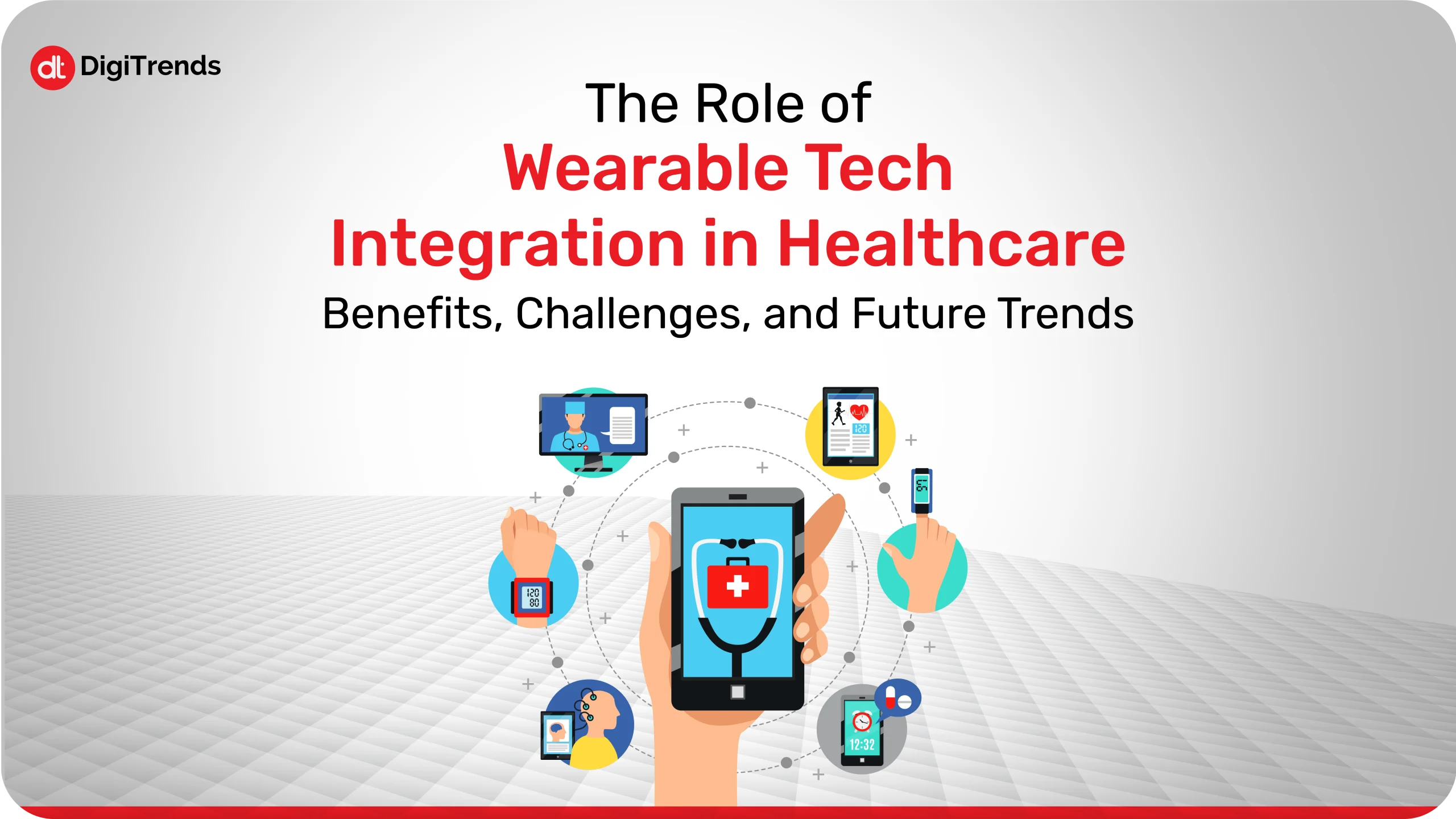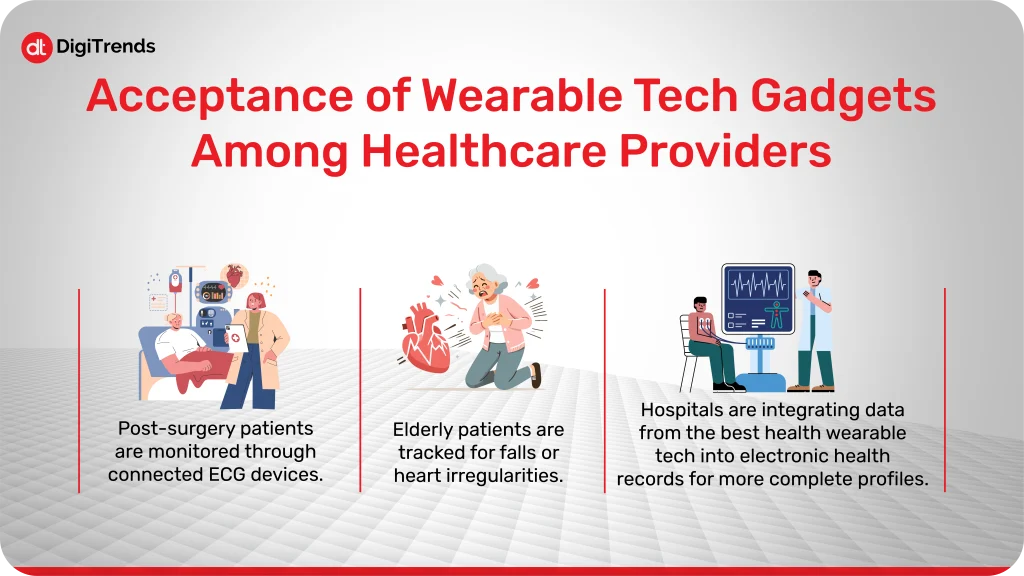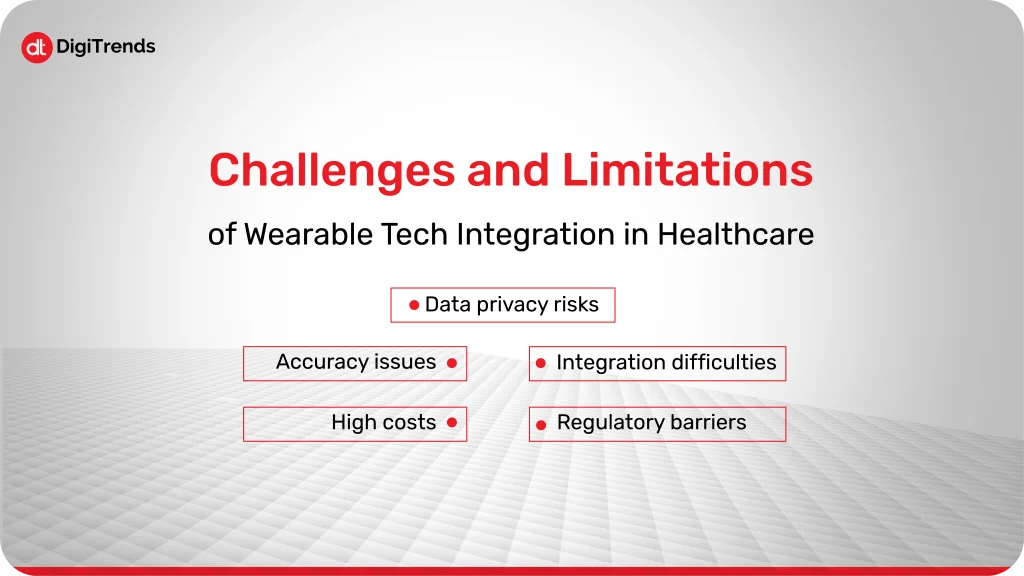The Growing Role of Business Intelligence in the Healthcare Industry
Explore the growing role of business intelligence in the healthcare industry, its key benefits, challenges, future trends, and more.
Continue Reading
Nowadays, healthcare is not only focused on treating illness, but it is also about early detection and prevention. Additionally, there are now increasing cases of chronic illnesses, aging populations, and a demand for personalized healthcare, which has pushed the healthcare industry to innovate and serve accordingly.
The healthcare industry has no doubt kept up with the pace of technology and proposed more and more innovative solutions, systems, and treatments for patients, such as telemedicine apps, AR/VR integration in healthcare systems for better detection and treatment, and much more.
One more technology that now plays a major role in healthcare is wearable tech integration.
According to Global Growth Insights, the global wearable health devices market is expected to be valued at USD 57.16 billion in 2034, showing how important wearable tech gadgets have become for patients, providers, and even insurers
What began as simple step counters has turned into a movement of advanced wearable technology gadgets that can track heart health, blood sugar, sleep cycles, stress levels, and much more. These tools don’t just collect data. They help patients take charge of their health and give doctors real-time insights to make better decisions.
Explores the role of wearable tech integration in healthcare, the different categories of wearable technology gadgets, the benefits, the challenges, and what the future holds for the best health wearable tech.
Wearable tech gadgets are basically smart electronic devices to be worn on the body. These devices continuously track health data and send information to the apps that are connected to them. The gadgets are not like the wearable devices present in hospitals that only check vitals, but they monitor patients every day, every hour.
Common examples:
When connected with mobile apps, telehealth systems, and IoT, wearable tech integration creates a direct bridge between patients and providers.
There is no doubt in the fact that wearable tech devices are making healthcare more accessible for patients; hence, the adoption of this technology is increasing with time.
According to research, approximately 30% of the adult population utilizes wearable healthcare devices. Moreover, certain insurers also provide a reduction of 20% for each wearable medical device, to facilitate their clients with affordable tech devices and achieve their health objectives.
This indicates how this technology is gaining traction around the world and how it is being integrated into the healthcare industry.

Are these wearable tech gadgets approved by healthcare providers?
Absolutely! Hospitals and doctors were once concerned about the integrity and precision of the wearable devices, but the tech evolution of these devices has changed the way it is perceived.
Some examples of wearable tech integration in healthcare:
This acceptance indicates that wearable tech devices are becoming an essential part of healthcare now.
There are various categories of these devices. Let’s have a look:
The most common wearable technology gadgets are smartwatches. Devices like the Apple Watch Series 9 offer ECG, oxygen monitoring, and emergency alerts. These watches are convenient to use and provide advanced tracking that offers them the best health wearable tech for everyday users.
Wearable EGG monitors are a great tool for heart health. There are devices like the Apple Watch Series 4 that allow users to monitor, diagnose, and manage cardiovascular conditions at home. This facilitates easy and seamless monitoring of the heart.
One of the cool wearable tech gadgets is the fitness trackers that have advanced sensors. These devices provide precise tracking of various metrics, such as measuring recovery, strain, and sleep quality. Users can use these devices to optimize their exercise routines and overall health.
Quite obvious from the title, continuous glucose monitors are used to manage diabetes. Brands like Dexcom provide these devices that deliver real-time data and insights for effective blood sugar level management.
Remote patient monitoring devices are used to monitor vitals like oxygen levels and blood pressure at home, which helps in reducing necessary visits to the doctor.
Mental health facilities are increasing as time moves forward. Wearable tech gadgets also focus on it by providing stress monitoring, and these trackers immediately send notifications when help is needed. Devices like the Garmin Venu 2 and WHOOP 4.0 monitor stress levels. They provide actionable insights for effective stress management.
Modern hearing aids include features like Bluetooth, fall detection, and cognitive monitoring, making them advanced wearable tech devices.
The benefits of wearable technology gadgets go far beyond fitness tracking. Let’s break them down:
With the best health wearable tech, people can easily detect potential health issues before they become a major problem. For example, irregular heartbeat alerts can prompt early medical intervention.
These wearables are not like the normal devices; they provide 24/7 health tracking. This is critical for patients with chronic illnesses like diabetes or hypertension.
Wearable tech integration allows doctors to monitor patients at home. Post-surgery care, chronic illness management, and elderly monitoring become more efficient and less costly.
Wearables gamify health. Step goals, progress trackers, and reminders keep patients actively involved in their own care.
Doctors no longer rely only on patient memory or occasional tests. They can now receive continuous data from wearable technology gadgets that lead to better diagnoses and personalized treatments.
One recent study from Michigan Medicine found that its remote patient monitoring program led to a 59 % reduction in hospitalizations among high-risk patients. That kind of drop indicates that RPM is cost-effective, not just for patients, but for hospitals, insurers, and health systems.

Like every other device, wearable tech integration also faces some challenges, such as:
These challenges need to be addressed for the best health wearable tech to reach its full potential.
Remote patient monitoring (RPM) is one of the most impactful uses of wearable tech devices.
Patients receive immediate alerts for abnormal readings, while doctors are notified instantly, enabling timely intervention.
Patients in rural areas or with mobility issues benefit from wearable tech integration, reducing the need for frequent hospital visits.
During virtual consultations, doctors can view real-time health data collected from wearable tech gadgets.
With IoT, devices talk to each other and to hospital systems, creating a smooth flow of information that improves outcomes.
Looking forward, wearable technology gadgets will only get smarter and more integrated.
Key trends include:
These innovations make the future of cool wearable technology more promising than ever.
At DigiTrends, our role is to bridge the gap between innovative wearable technology gadgets and practical healthcare applications.
We help healthcare organizations adopt the best health wearable tech by ensuring smooth connectivity with existing systems, secure data management, and compliance with industry standards. More importantly, we focus on the user experience, so both doctors and patients can actually benefit from the information wearables provide.
Whether it’s enabling remote monitoring for chronic conditions, supporting preventive care with advanced analytics, or designing tools that improve patient engagement, DigiTrends brings together expertise in technology and healthcare to deliver lasting impact.
Our vision is simple: to make healthcare smarter, more accessible, and more human through cool wearable technology. By aligning innovation with everyday care, we give organizations the confidence to embrace the future of health.

Wearable tech integration is changing the way healthcare works. From smartwatches that monitor heart health to CGMs that track diabetes, wearable technology gadgets are shifting healthcare from reactive treatment to proactive prevention.
The best health wearable tech empowers patients to take control, supports doctors with real-time data, and helps healthcare systems save costs.
While challenges like data privacy and affordability remain, the future of cool wearable technology points to smarter, more personalized, and more accessible healthcare for all.
Wearable tech gadgets are no longer just fitness accessories. They’re becoming a core part of modern medicine.